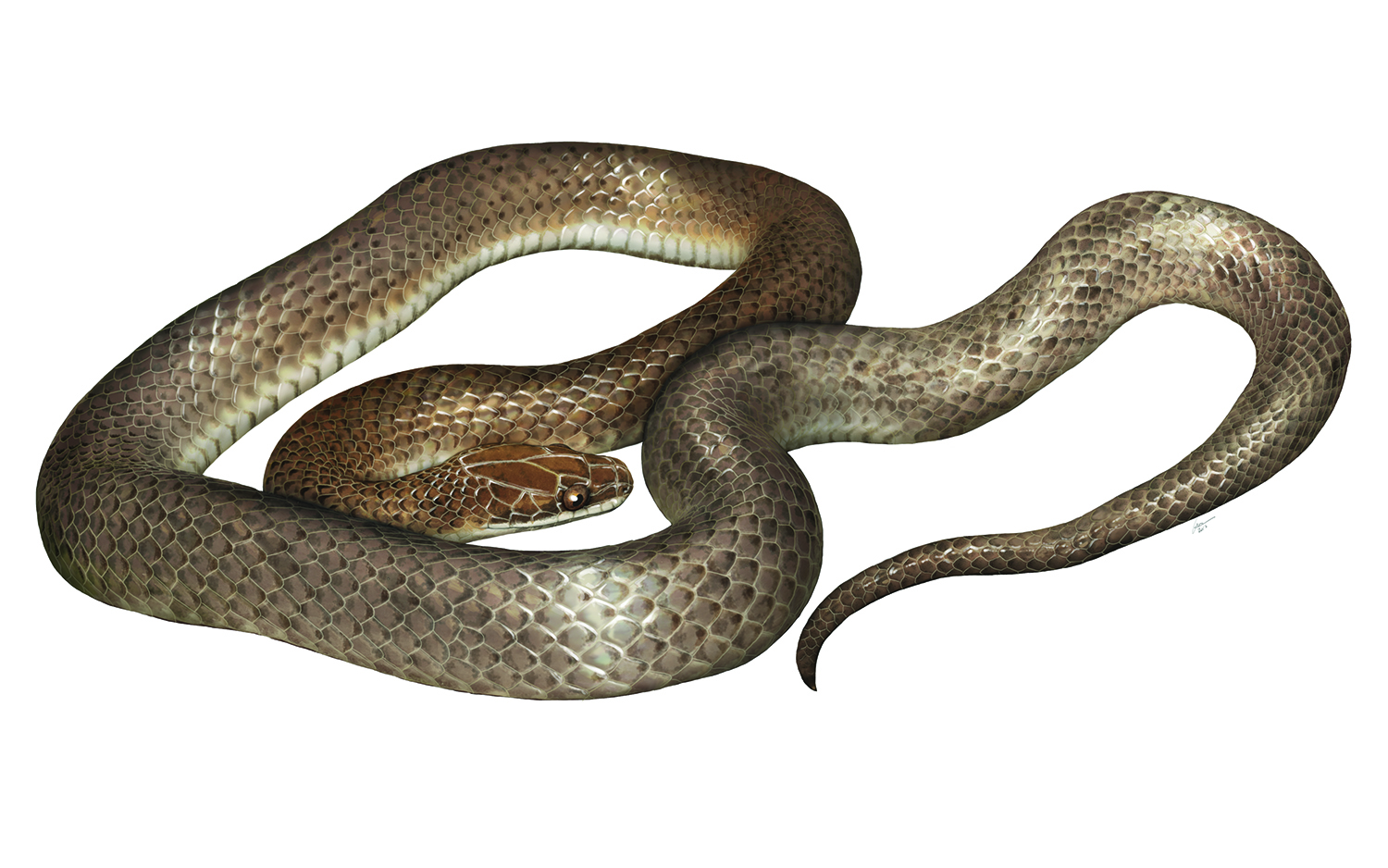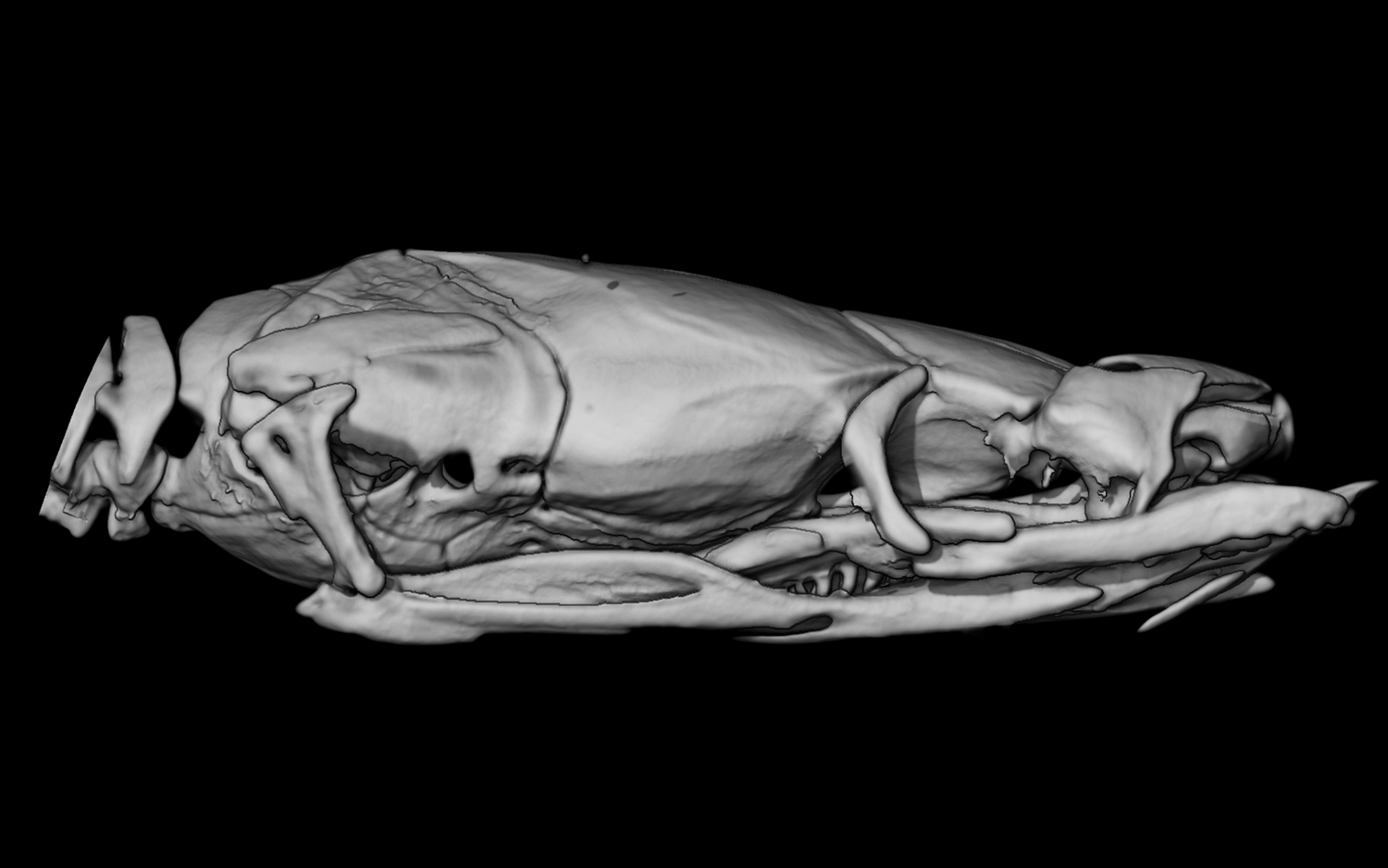'Mystery Dinner Snake' Found in Belly of Another Snake Finally Identified
However, the animal's long wait in species limbo is finally over.
Researchers recently revealed that not only is the snake a new species; it also represents a new genus. And the name they gave it, Cenaspis aenigma, is a whimsical nod to where the snake was found, translating from Latin as "mysterious dinner." [Photos: This Python Chowed Down on 3 Deer]
The presumably delicious snake, an adult male, measured about 10 inches (26 centimeters) in length. It belongs to the snake family Colubridae, which includes hundreds of species — about 51 percent of all known snake species.
Yet, the so-called dinner snake possesses certain traits that make it unique among all of its Colubridae relatives, such as the shape of its skull and reproductive anatomy, and the undivided, enlarged plates under its tail, according to the study.

Using computed X-ray tomography (CT) scans, the researchers created digital models of the snake's skull, reproductive organs and other skeletal features, and compared them to models of known snakes. They identified the snake as a member of the Colubridae family, but with features that represented a new species and genus, according to the study.
An elongated skull and the distribution of scales hinted that it was a burrowing snake, lead study author Jonathan Campbell, a professor of biology at the University of Texas at Arlington, told Live Science in an email.

Decades of searching
Campbell has known about this mysterious snake for decades, ever since it was collected in 1976 in Mexico, he said. Soon after the snake was recovered from the belly of a coral snake, scientists recognized it as a novel species. But researchers hesitated to describe the species from only one specimen — and a partly digested one, at that, they reported.
Sign up for the Live Science daily newsletter now
Get the world’s most fascinating discoveries delivered straight to your inbox.
Over the next four decades, Campbell and his colleagues combed the highlands of southern Mexico, making dozens of trips to search for more evidence of the "enigmatic little snake," they wrote in the study. But they were unable to find any living individuals resembling the one from the coral snake's stomach, likely for a couple of reasons, Campbell said.
Many snakes live in very restricted geographic ranges; at the same time, snakes aren't typically abundant in their native ecosystem, which can make them harder to find, Campbell explained.
In the end, after 42 years went by, the scientists decided that it was finally time to share their discovery.
"At some point, you have to realize that you need to make the information available and let other researchers follow up," Campbell said in the email.
The findings were published online Nov. 27 in the Journal of Herpetology.
- Rats Are Ticklish! Cats Can Bark! 9 Weird Animal Facts
- In Images: Hungry Python Eats Porcupine Whole
- Viper vs. Viper! Never-Before-Seen Combat Recorded
Originally published on Live Science.

Mindy Weisberger is an editor at Scholastic and a former Live Science channel editor and senior writer. She has reported on general science, covering climate change, paleontology, biology and space. Mindy studied film at Columbia University; prior to Live Science she produced, wrote and directed media for the American Museum of Natural History in New York City. Her videos about dinosaurs, astrophysics, biodiversity and evolution appear in museums and science centers worldwide, earning awards such as the CINE Golden Eagle and the Communicator Award of Excellence. Her writing has also appeared in Scientific American, The Washington Post and How It Works Magazine. Her book "Rise of the Zombie Bugs: The Surprising Science of Parasitic Mind Control" will be published in spring 2025 by Johns Hopkins University Press.










